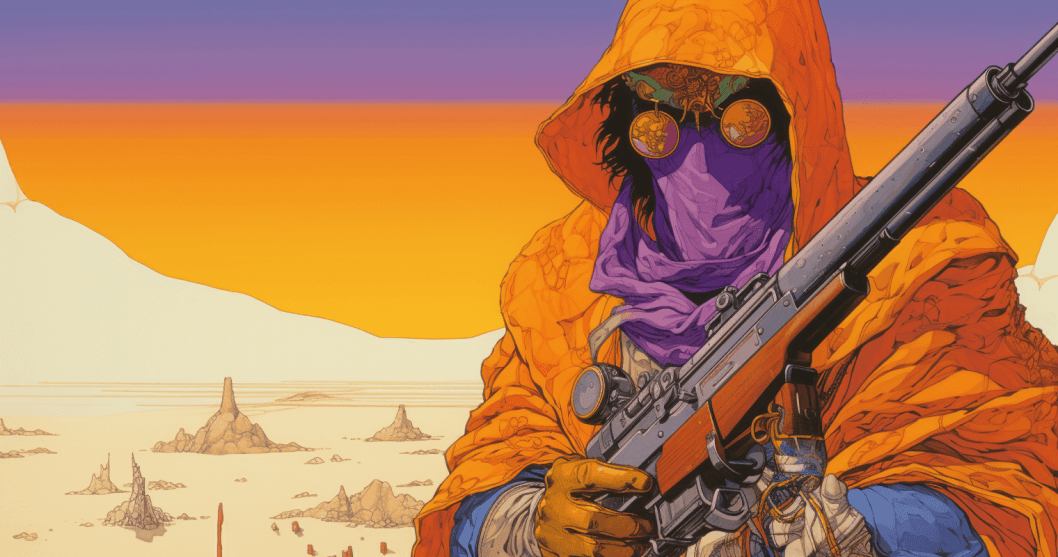Learn about a new trend among monetization strategies – cosmetic monetization in mobile games.
As we dive deeper, you’ll understand why this monetization feature isn’t just a passing fad, but a lucrative, sustainable model that’s gaining traction.
It’s a potent strategy that can exponentially enhance your revenue without disrupting the user experience. In fact, it can enrich it.
Cosmetic Items in Mobile Games
At its core, cosmetic monetization is a revenue model in which game developers sell in-game items or features that have no direct impact on gameplay mechanics.
These cosmetic items do not enhance the player’s abilities or provide any competitive advantage. Instead, they focus purely on aesthetics – what the game or the characters look like.
It’s a concept that’s gaining more ground in the mobile gaming world each day.

Common Types of Cosmetic Items
From unique character skins, avatars, and animations, to specially designed equipment and virtual environments, cosmetic items span a wide range. These items do not alter the game’s balance, ensuring a level playing field for all players, whether they choose to invest in cosmetic items or not.
For example, a developer might offer a range of bespoke skins for a character, allowing players to adorn their avatars with unique appearances that resonate with their personal tastes.
The mobile game industry has also seen the introduction of exclusive animations, such as victory dances or special moves, which players can use to express joy or celebrate achievements in the game.
Further broadening the horizons of cosmetic items, developers offer specially designed equipment such as weapons or vehicles, distinctive only in their visual appeal and not their in-game functions. Even entire virtual environments can be redesigned, giving players the opportunity to add a personal touch to the gaming spaces they inhabit.
Why Do Players Make Cosmetic Purchases?
According to research by Newzoo, as much as 85% of gamers from the United States, aged 13 to 45, are aware of cosmetic items. Moreover, 81% of those that are aware would pay real money for virtual cosmetic items.
Some of them don’t mind spending a lot.
According to the same research, mobile game whales spend hundreds of dollars per month on skins. Most of them are older, male players.
You might find yourself questioning – why would players spend real-world money on items that have no impact on their in-game performance or their ability to win?
Well, that’s where the beauty of cosmetic monetization lies.
Just as people buy clothing, accessories, and home decor to express their unique personalities and styles in the physical world, gamers, too, value the opportunity for self-expression in their virtual worlds. The feeling of donning a unique skin or implementing an exclusive animation to stand out from the crowd is deeply gratifying for many players.
Moreover, these items often become a symbol of prestige or dedication.
Acquiring rare cosmetic items can be a signal to others about a player’s commitment, making them a source of pride. This drive for personalization, coupled with the desire to showcase one’s investment in the game, forms the essence of why players willingly spend on cosmetic items.
But how to implement cosmetic monetization features successfully and maximize player spending?
Here are some tips to consider.

Cosmetic Monetization: Tips for Selling Cosmetic In-Game Items
As game developers or publishers, it’s crucial that you understand the right strategies to effectively sell cosmetic in-game items.
How can you design and market these items to increase their appeal? How to price them? What keeps players coming back for more?
The answers to these questions lie in a deep understanding of our players and a strategic approach to the design, integration, and marketing of cosmetic items.
1. Understand Your Audience
Understanding your players’ preferences is the cornerstone of a successful cosmetic monetization strategy.
Gain insights into your audience demographics, their gameplay styles, the characters they favor, and the aesthetics they prefer.
This information will guide you in designing cosmetic items that resonate with your players and motivate them to make purchases. Conduct surveys, leverage game analytics, or engage with your players on social media to gather this data.
2. Balance Exclusivity with Accessibility
Exclusivity is a powerful tool in driving cosmetic sales. Limited-time offers, seasonal items, or rewards tied to specific achievements add a sense of urgency and rarity.
However, it’s important to balance this with accessibility.
All players should have opportunities to acquire cosmetic items, even if it’s at a slower pace or with more effort. A balanced approach ensures that no segment of your player base feels left out or overly pressured to make purchases.

3. Offer a Wide Variety
Offering a wide range of cosmetic items caters to different player preferences and increases the chances of sales.
Consider varying your offerings in terms of aesthetics, themes, complexity, and price.
Additionally, incorporate different types of cosmetics such as skins, animations, sound packs, or environment customizations to keep your offerings fresh and exciting.
4. Quality Over Quantity
While offering a wide variety is essential, the quality of your cosmetic items shouldn’t be compromised.
High-quality, well-designed items are more likely to appeal to players and justify their cost. Invest in creating items that are visually striking, thematically fitting, and well-integrated into the gameplay.
Players should feel that their purchase enhances their gaming experience, and high-quality cosmetics deliver on this expectation.
5. Integrate Cosmetics into Gameplay
Integrating cosmetics into gameplay can significantly boost their appeal. While these items shouldn’t affect game balance, they can be woven into the narrative, character development, or player progression.
For example, character skins that reflect a milestone achievement or a narrative arc add meaning to the cosmetics, making them more than just aesthetic enhancements.
6. Promote Your Cosmetic Items
Your cosmetic items need to be showcased effectively to generate player interest. Use in-game stores, pop-ups, or even the game’s loading screens to highlight your offer.
Also, show dynamic previews that display the cosmetic items in action, allowing players to visualize their potential purchase.
Another great way of promoting cosmetic items is by including them in ads.
7. Price Your Cosmetic Items Strategically
Pricing is a delicate art in cosmetic monetization. Prices should reflect the perceived value of the items, considering factors like exclusivity, design complexity, and in-game significance.
Offer a range of price points to cater to different player budgets, as well as different types of spenders, like whales.
Also, consider bundling items or offering discounts on multiple purchases as a strategy to increase sales.

8. Keep Refreshing Your Offerings
Keeping your cosmetic store fresh and updated is key to maintaining player interest.
Regularly introduce new items, retire older ones, and bring back popular items occasionally. This continuous refreshment encourages players to check the store regularly and fosters a sense of anticipation and excitement.
9. Foster a Sense of Community
Building a sense of community can be a powerful driver for cosmetic sales.
Enable features like sharing, gifting, or trading cosmetic items among players. Create in-game spaces where players can show off their cosmetic collections. These social interactions can encourage more players to invest in cosmetics and enhance the overall gaming experience.
10. Listen to Player Feedback
Lastly, always stay open to player feedback. Your players can provide valuable insights into what they like, what they don’t, and what they wish to see in your game.
Encourage feedback through in-game channels or social media platforms. Listening and responding to feedback not only improves your cosmetic monetization strategy but also builds a loyal player base that feels valued and heard.
Examples of Cosmetic Monetization Features in Popular Mobile Games
Let’s delve into some of the most popular mobile games out there and see how they’ve utilized cosmetic monetization to their advantage.
Each of these games from different genres demonstrates how effectively cosmetic monetization can be implemented while enhancing the gaming experience.
The key is in understanding the players’ desire for individuality and designing a monetization strategy that addresses this need while maintaining an engaging and balanced gameplay.

Cosmetic Monetization in Fortnite
Fortnite, while not exclusively a mobile game, has a significant presence in the mobile gaming world and is a great example of cosmetic monetization. The game has implemented an extensive range of cosmetic items, from character skins and back blings to pickaxe skins and gliders.
The most famous of these probably include the skins, with a dazzling array available, each offering unique styles, themes, and even collaborations with popular culture franchises. The desire to amass an impressive collection of these skins, or to own the latest limited-edition offering, drives many players to part with their money.

Cosmetic Monetization in Call of Duty: Mobile
Call of Duty: Mobile, a title that requires no introduction, has been a trendsetter when it comes to cosmetic monetization.
It thrives on a multitude of cosmetic features, ranging from character and weapon skins to unique emotes and voice packs. These cosmetics can be obtained through in-game currency, events, or direct purchases.
The appeal here lies in exclusivity, as many of these items are available only for a limited period or tied to specific achievements. This fuels players’ desire to acquire them and show off within the game.

Cosmetic Monetization in Genshin Impact
Genshin Impact, a renowned action RPG, uses cosmetic monetization through its unique character system.
Each character comes with its own set of abilities and aesthetic appeal.
Though some of these characters can be obtained through gameplay, the acquisition process can be expedited through purchases, more specifically the game’s gacha system.
The game also offers weapon skins and outfits, making the characters visually appealing and distinct, reinforcing the desire to collect them all.

Cosmetic Monetization in Subway Surfers
Subway Surfers, one of the most-played mobile games globally, utilizes cosmetic monetization through its vast array of unique characters and hoverboards.
Players can buy these with in-game currency or real money.
The chase to collect them all and display a different aesthetic in each game drives the success of this monetization strategy.

Cosmetic Monetization in Asphalt 9: Legends
In Asphalt 9: Legends, cosmetic monetization is based on a diverse selection of car models and skins. While these cosmetic items do not affect the cars’ performance, they provide players with a sense of individuality and prestige, making them feel unique on the racetrack.

Cosmetic Monetization in Animal Crossing: Pocket Camp
Animal Crossing: Pocket Camp uses cosmetic monetization to offer a multitude of items for personalizing players’ campsites and camper vans.
From furniture to clothing, every item contributes to creating a personalized space that reflects the players’ tastes. It demonstrates how cosmetic monetization and the desire for customization often go hand in hand.

Cosmetic Monetization in AFK Arena
AFK Arena uses a heroes system similar to Genshin Impact, where each hero has a unique aesthetic and skillset.
Players often end up collecting heroes not just for their abilities but also for their distinct visual appeal. Skins and accessories further add to the cosmetic appeal, strengthening the players’ emotional connection with their heroes.
Cosmetic Monetization: Final Thoughts
As we continue to navigate the exciting world of mobile gaming, cosmetic monetization stands out as a strategy that not only bolsters revenue but also amplifies player engagement.
It’s a fine balance of understanding player desires, integrating aesthetics into gameplay, and maintaining a continuous dialogue with our audience.
Whether you’re just dipping your toes into cosmetic monetization or looking to refine your approach, I hope this guide will be helpful.
Have any questions? Reach out in the comments!







Comments